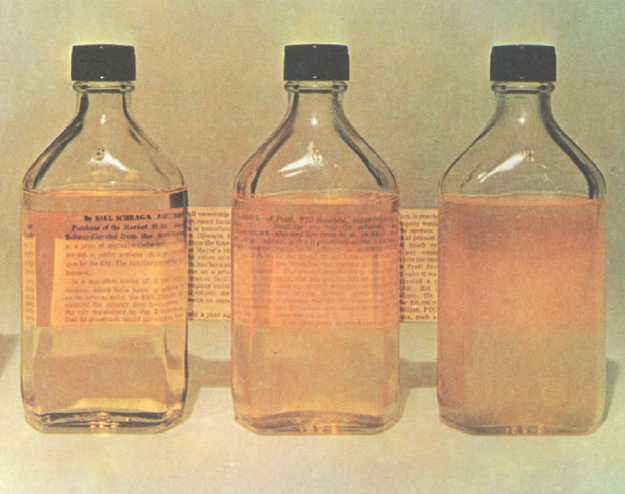Shipping Instructions
Samples are to be forwarded to appropriate testing
laboratories by the most expeditious means. Wherever
feasible, samples should be delivered directly to the
laboratory by hand. Samples in amounts up to 10
gallons may be shipped via Railway Express.
Four l-quart samples or a l-gallon sample
(1 gallon maximum) of fuel may be air shipped
via military aircraft when packed according to
NAVAIR 15-03-500 (USAF AMF 71-4), which fur-
ther indicates that fuel samples may be transported on
passenger-carrying aircraft.
Visual Inspection Procedures
Since very small percentages of water or foreign
matter can cause trouble, the sampling and inspection
of fuel must be done carefully. Proceed as follows:
1. The first check you make is to visually inspect
the color of the sample. The color of the sample must
agree with the color for the grade of fuel that the system
is supposed to carry. The color of the fuel may have
changed because the fuel has been mixed with another
petroleum product. A definite yellow cast or darkening
of color in gasoline may be caused by lubricating oil,
diesel oil, or jet fuels. Lubricating oil and diesel fuel
also can cause a change in color in jet fuels. Since the
percentage of another petroleum product in a fuel may
be so small that it cannot be detected visually, yet can
make it unacceptable for use, no off-color fuel should
be used until an analysis is made to determine its usabil-
ity.
2. The second check of the sample should be for
water. The sample should be free of any cloudiness. See
the first sample illustrated in figure 3-3 for an example
of acceptable fuel for this visual check. The sample
must be clear enough that newsprint can be read through
a l-quart sample. If the fuel is cloudy and the cloud
Figure 3-3.—Degrees of cloudiness in JP-5. The left sample is clean and bright and is the only acceptable fuel for aircraft.
3-13

